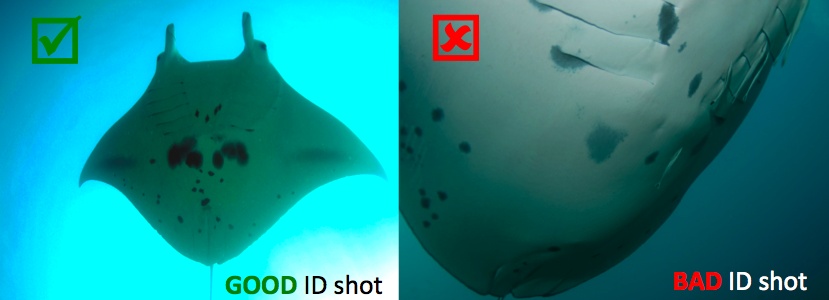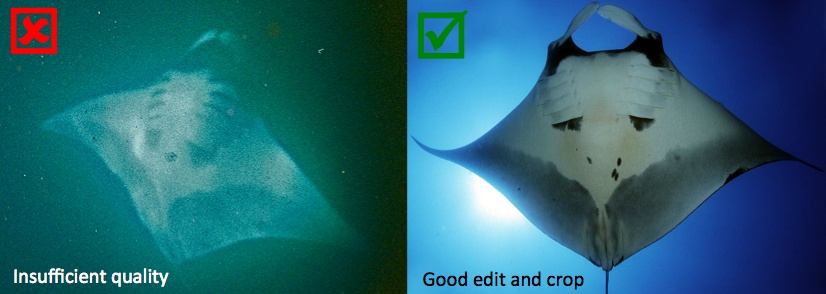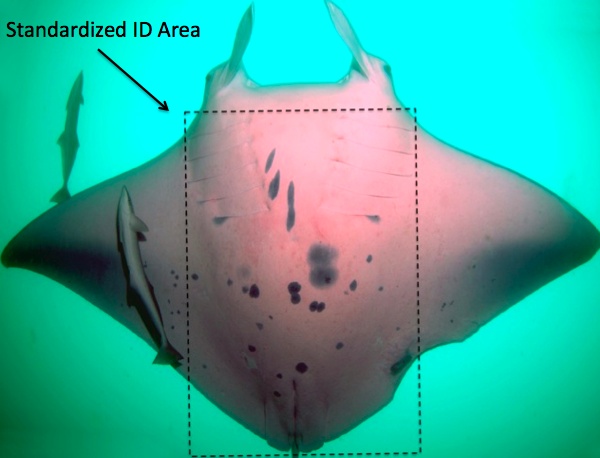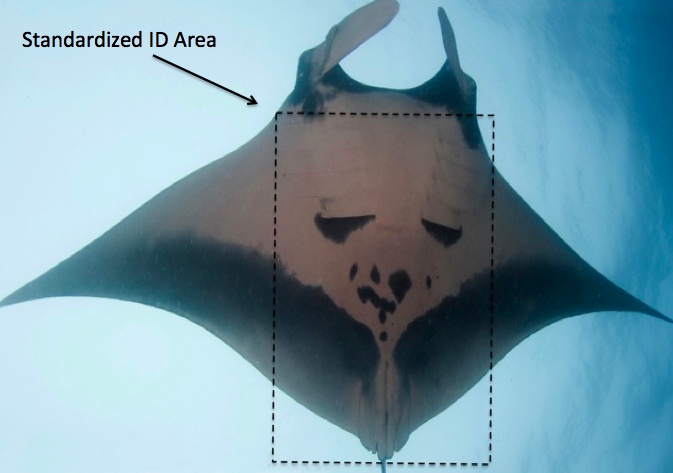Photographing a manta
Did you know that by photographing a manta ray you can directly contribute to a global effort to better understand and protect these amazing animals?
Taking the perfect ID shot
Manta rays are predominantly encountered on SCUBA, however in some areas of the world snorkelers are also able to engage with these gentle giants. For this reason we focus on tips for taking ID shots whilst SCUBA diving.
If you spot a manta ray on a dive and have the opportunity to take an ID picture please do. However please focus foremost on ensuring that you have a good encounter with this animal and that you are following the recommended code of conduct for the region.
When the opportunity arises, try to remain stationary allowing the manta ray to control the encounter. If you remain stationary, mantas will often approach you and may even pass overhead. Avoid rushing towards a manta as this may scare them away from you, ending the encounter. By positioning yourself below the manta during the encounter you are already set up to take the perfect ID shot.
| ||
|
As the manta ray approaches get your camera ready. Try holding your breath if it looks like it might swim over you. Some mantas enjoy the tickle of the bubbles, but most don't and this could scare them away. As the manta passes overhead try to get the entire underside in frame. If you have a wide-angle lens this may be easy, if you do not, please do not be concerned. For a positive ID we only need one image of the standardized area on the underside of the animal. If possible, take as many consecutive photos as you can (especially if there are remoras or other fish concealing the ID area). This technique should ensure that you capture all of the information possible from the animal. When uploading photos it is important to try and sex each individual ray. It is also important to not if the animal had any deformities, distinguishing marks (e.g. abrasions from fishing nets, hooks or boat strikes), or scars (e.g. shark bites).

|
| Fig 3. Good vs bad identification photos |
Determining sex in your photo
The preparation of your pictures to upload is simple, yet critical to the identification process. If they are not prepared correctly it may result in a false positive or misidentification. Ideally when editing photos, you may want to alter several things. Cropping the photo so that the manta is full frame will make viewing the natural spot pattern easier. When cropping, you may also have to simultaneously rotate the photo so that the body is centered within the frame. Using photo editing programs like Photoshop or Picasa, you can also alter the contrast and color saturation to make patterns stand out.

|
| Fig 4. Manta image edit quality |
Once you have edited your manta photos, or frame grabs from video, you are ready do directly upload your photos to the manta matchers website. Every contribution is extremely important, so even if you only have a single photo to upload, you're helping to enhance our knowledge about these mysterious animals.
By supplying us with your email address in your encounter report, the manta matcher database will automatically notify you if your individual manta is reported or re-sighted again.
Thank you for contributing to this global effort to protect Manta Rays!

